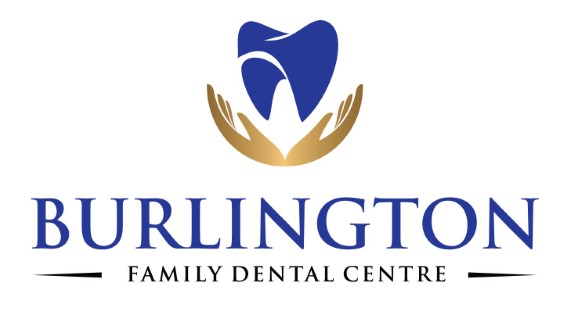Patients sometimes ask if they should get their teeth cleaned at the dentist. Obviously! However, we tell them that good oral hygiene starts at home. You have a lot of tools at your disposal to prevent tooth decay and gum disease. Tools like your soft toothbrush, dental floss, and mouthwash.
However, even with an electric toothbrush and regular usage, our teeth and gums aren’t immune to tooth decay and gum disease? But why?
Dental Plaque – The Silent Killer
Dental Plaque is probably your mouth’s biggest nemesis!
Dental plaque is a colorless, sticky stuff that forms over your teeth and can make them ‘feel fuzzy’ when you run your tongue over them!
Plaque bacteria can make your teeth appear yellow, cause cavities and be a contributing factor in bad breath! Oral hygiene must be practiced on a regular basis to prevent dental disease.
So what is plaque on teeth?
Plaque is a sticky layer of bacteria that continuously forms on your teeth and is the primary cause of cavities, tooth decay, halitosis, and gum disease.
What causes plaque?
Dental plaque builds when you consume foods that contain sugar and starch, for example:
- Carbohydrates
- Milk
- Soft drinks
- Cakes
- Sweets, candy, and chocolate
Plaque Bacteria loves these foods and drinks and will flourish, producing acid that over time will destroy your tooth enamel, leading to tooth decay, bad breath, cavities, and gingivitis (gum disease).
Halitosis – bad breath is primarily caused by the buildup of bacteria inside the mouth, which creates a foul smell, which can, of course, be very embarrassing and a sign of more serious dental issues.
What does plaque look like?
Dental Plaque is a colorless gluey layer that is formed from leftover food particles and saliva that mix inside your mouth.
Plaque develops not only on the outer layer of your tooth enamel but can also form under the gums, on tooth roots, and can even break down the bones that support your teeth.
Typically, dental plaque will begin to form on your teeth approximately 4-12 hours after brushing and is a significant cause of most oral health issues.
When left and untreated, plaque hardens and forms into a hard to remove tartar.
How does plaque form exactly?
Inside your mouth plaque is formed as the result of a chemical reaction! This chemical reaction happens when the saliva in your mouth mixes with carbohydrates and leftover food particles in your mouth.
Carbohydrates exist in a lot of the food we consume. We all know that foods containing high sugar levels are also high in carbohydrates. But carbohydrates can also be found in healthy foods, such as fruit and vegetables.
How plaque forms – broken down
- When you break down your food by chewing it, this releases carbohydrates.
- The carbohydrates then mix with the saliva in your mouth (natural bacteria) and produce acid.
- This acid over time, will destroy your tooth enamel.
- But when this acid mixes with leftover food particles and saliva, a further chemical reaction takes place, and a sticky substance is formed that coats the teeth. This new substance is dental plaque and can be very troublesome if not removed.
Prevent plaque bacteria buildup
The American Dental Association advocates good oral hygiene to tackle the buildup of harmful plaque bacteria.
- To stop the formation of plaque, it is recommended that you brush your teeth for two minutes at least twice a day using a medium – soft toothbrush.
- It is also recommended that you floss between your teeth at least once a day to remove food particles and bacteria that can collect there.
- You can also use an antibacterial mouthwash.
If plaque is left untreated on teeth and not removed by regular brushing, it can harden and turn into tartar, which feels like a rough surface in the mouth that brushing alone won’t remove.
Tartar builds up along your gum line and on the fronts and backs of your teeth. It is a hard, yellow, or brown substance that clings tightly to the teeth, that can’t be removed with regular brushing. Chemically, tartar consists of calcium phosphate, calcium carbonate, and magnesium phosphate.
Tartar can be a real issue for coffee or tea drinkers and smokers because it is porous and therefore soaks up stains easily, which can discolor your teeth and make them appear more yellow.
Flossing can get rid of some tartar, but generally, tartar needs to be scrapped off. This needs to be done by a dental professional rather than at home. Trying to scrape off tartar at home is very risky because you can scratch the enamel of your teeth and severely damage it.
Dental plaque definition – The Science!
Scientists call plaque a “biofilm.”
They call it this essentially because it is a community of living microbes surrounded by a gluey polymer layer, which helps the microbes attach to the surfaces in your mouth, enabling the micro-colonies to grow and thrive.
The plaque bacteria can also be a contributing factor in early-stage gum disease (gingivitis).
Gum disease – Gingivitis
Gingivitis is an early stage of gum (periodontal) disease.
Plaque that is not removed will eventually harden into tartar. Tartar collects at the gum line and on the fronts and backs of your teeth.
Gingivitis occurs when the tartar, plaque, and bacteria continue to increase, causing the gums to become red, swollen, and maybe bleed when you brush your teeth.
Gingivitis can be reversed with proper oral hygiene and the help of your dentist.
If left untreated, gingivitis can advance into periodontal disease, which can be severe and painful.
Periodontitis causes gums to recede, pulling them back from the teeth. The worst-case scenario is the bone supporting the teeth being destroyed, leading to tooth loss.
Periodontitis is irreversible without major procedures like gum grafts.
The fight against dental plaque
Inside your mouth, plaque can form consistently and can be very hard to see, but fighting dental plaque need not be a battle!
Sometimes there can be a heavy plaque formation, meaning that you may notice a thick white sediment on the outside of the teeth when you look at your teeth. However, if you are unsure, use a disclosing tablet (which can be purchased in most pharmacies). These temporarily stain the plaque on the tooth so that it can be easily seen and removed through brushing and flossing.
Plaque is your mouth’s biggest enemy!
So what can you do to help fight plaque?
Plaque is sticky and can only be removed with brushing and flossing.
- A mouth rinse alone won’t be enough to remove plaque and keep your teeth and gums healthy.
- Brush your teeth twice a day using a medium or soft-bristled toothbrush and fluoride toothpaste.
- Floss our teeth daily – preferably before bedtime, using dental floss or an interdental cleaner. This helps you reach those places your toothbrush can’t.
- Eat a balanced diet and avoid snacking between meals because snacking provides more sugar for the bacteria in plaque, which is then converted into acid and contributes to tooth decay.
- Use a toothpaste containing fluoride, which can help repair enamel damage.
- Regular dental visits
- Avoid smoking – because this can increase the risk of plaque and tartar buildup.
If there is a substantial amount of tartar, your dentist may recommend you use an electric toothbrush and a fluoride toothpaste and advise you to avoid certain foods.
Dentists advocate changing your toothbrush at least every three months or sooner if the bristles are looking worn out or frayed.
Tooth brushing
Plaque can be removed easily, but if you are in the habit of skipping your tooth brushing routine, it can quickly harden into tartar. Therefore, cleaning all surfaces of your teeth – inside, outside, and the chewing surfaces, between your teeth and under the gum line, too, is very important.
- Brush your teeth at least twice a day or after every meal.
- Brush for at least two minutes to stop bacteria from building up
- After brushing, spit out any excess toothpaste.
You don’t need to be vigorous with your brushing to remove plaque. Using a soft-bristled toothbrush with a small head and an angled arrangement of long and short round-end bristles will do the job!
It is also essential to use toothpaste with the right concentration of fluoride, which for adults is approximately 1,350 parts per million (ppm) of fluoride.
Don’t rinse your mouth straight after brushing because this dilutes the fluoride in your toothpaste and reduces its preventative effects.
Keep your toothbrush clean by rinsing it in clean water once you have finished brushing, then let it air-dry, and store it in an upright position.
Many dental experts recommend using an electric toothbrush to keep the buildup of plaque down, but remember to replace the head every three months.
Complications caused by plaque
Everyone is different, and so is the amount and effect plaque and tartar can have on their oral and overall health. For many people, plaque can build up quickly as they age, which means the older you get, the more you have to work at your oral hygiene and ensures you stick to your dental routine and not skip brushing or flossing your teeth twice a day.
Plaque can cause:
- Tooth infections – abscesses
- Gingivitis
- Periodontal gum disease.
- Tooth decay
- Tooth loss
- Tartar
Tartar is chiefly mineralized dead bacteria, combined with a small quantity of mineralized proteins from saliva.
Maintain good oral health and preventing plaque from building up on your teeth is the best way to stop tartar forming.
Conclusion
Good oral hygiene is essential in preventing the formation of plaque. Dental plaque can make your teeth appear yellow, cause cavities, bad breath, and lead to more severe problems, such as gum disease (gingivitis, and more severe dental problems, such as tooth loss and periodontitis).
The American Dental Association recommends regular brushing with fluoride toothpaste for at least two minutes twice a day and flossing once a day, preferably before bedtime, which will help you avoid the buildup of plaque. Which, when left, can harden and turn into tartar, a hard calcified, yellow or brown porous substance that adheres to the teeth and gums and can’t be removed with regular brushing.
However, don’t brush straight after eating, especially if you have eaten something acidic, such as grapefruit. You don’t need to be vigorous with your brushing to remove plaque. Using a soft-bristled toothbrush with a small head and an angled arrangement of long and short round-end bristles will get the job done.
And remember, it is recommended you change your toothbrush every three months or sooner if it is looking frayed and worn out.
FAQ
- What does plaque look like?
Plaque is a sticky, colorless to pale yellow substance, which can be very hard to detect. That said, if you want to know whether you’re removing plaque when you brush your teeth, you can use plaque discoloring tablets that are readily available from most pharmacies. Plaque discoloring tablets expose and plaque left on your teeth after brushing and flossing, enabling you to see when you have brushed all the plaque away.
- What is plaque on teeth?
Each and every one of us, to some degree, will have dental plaque if you run your tongue across your teeth, and they feel fuzzy. This is due to a buildup of plaque. Other signs that you have plaque are bad breath (halitosis) or red swollen gums that bleed when you brush your teeth.
- Dental plaque definition
Dental plaque is a biofilm of microorganisms that form on the surfaces of the mouth. It is initially a colorless substance that can turn into a yellow or brown deposit called tartar if left untreated. Dental plaque is a major contributing factor to tooth decay and gum disease.
- What causes plaque
Inside your mouth, plaque is constantly forming. It is a thriving ecosystem! The food and drink that you consume daily produce bacteria, setting up a chemical reaction using the sugars in your food to produce acid, which eats away at your tooth enamel.
- How is plaque formed?
Plaque appears where the teeth and gums meet and is a very sticky biofilm that regularly develops on your teeth. Dental plaque is formed through eating foods that contain sugar and starch. Dental plaque develops not only on the outer layer of your tooth enamel but also under the gums and on tooth roots.
Cleaning Your Teeth Isn’t Enough to Guarantee You are Free from Plaque and Decay
It is recommended to get regular dental cleaning in Burlington to make sure your teeth are free from harmful plaque and to prevent tooth decay and to avoid a dental emergency.



